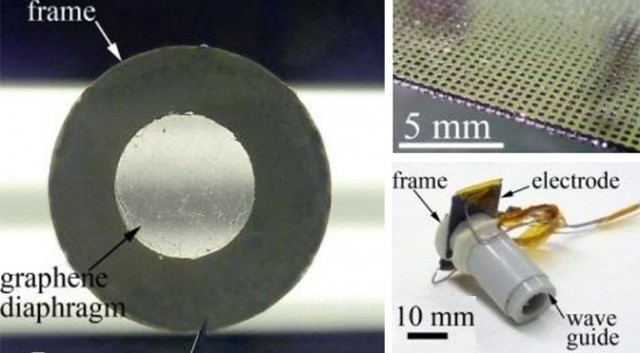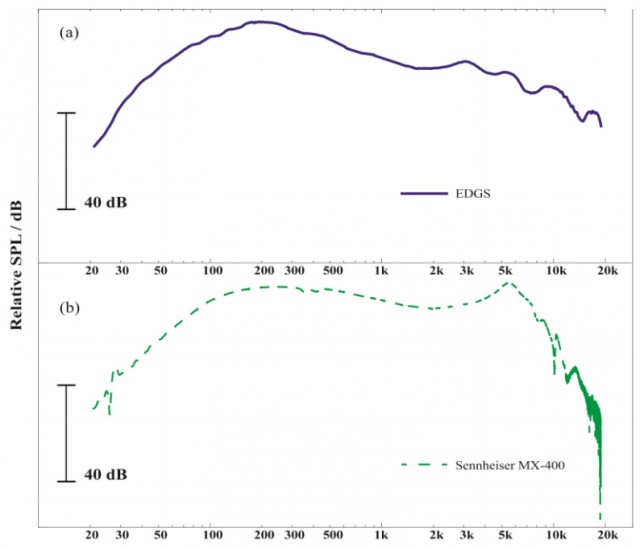Graphene-based speakers - a potential revolution in audio technology

Scientists from the University of Berkeley created headphones based on graphene .
Due to the outstanding physical and electrical properties of this material, even a prototype, without any optimizations, produced frequency characteristics comparable to those of modern commercial products.
Most speakers use a diaphragm to create sound pressure using mechanical vibration. “For human hearing, the ideal speaker or headphone should create a continuous sound pressure with a frequency from 20 Hz to 20 kHz, i.e. must have a flat frequency response , ” say Qin Zhou and Alex Zettl from Berkeley.
These guys created headphones that more or less meet these requirements. Their unusualness is that the diaphragm of the speaker is made of multilayer graphene. It is clamped between two electrodes creating an electric field. The oscillation of this field causes the graphene to vibrate, which produces sound:
')

“The graphene speaker, almost without any acoustic design, is comparable or even superior to commercial products,” say Zhou and Zettl.

The reason is simple. In modern loudspeakers, the diaphragm requires damping to avoid unwanted frequency response. Providing such damping is a rather complicated and expensive process, and also requires energy. The graphene diaphragm is devoid of this disadvantage - it is so strong and light that it dampens the air, which saves a lot of energy.
It is not excluded that soon graphene will become the dominant material for the manufacture of speakers of a wide range of devices - from mobile phones to concert speakers.
A document with a detailed description.
Source: https://habr.com/ru/post/172843/
All Articles